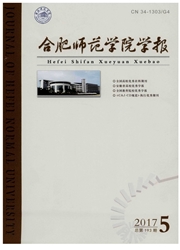

 中文摘要:
中文摘要:
“丛”和“簇”都是簇状集合量词,用于丛聚在一起的事物。“丛”和“簇”在对有生名词性成分和无生名词性成分的选择上都存在着一些差异。这些差异同“丛”和“簇”的不同认知语义基础有关。“丛”和“簇”的最基本的认知语义基础是,“丛”用于高大集合体,“簇”用于矮小集合体。此外,“丛”还有[+散状,+离散]这样的语义特征,“簇”还有[+团状,+凝聚]这样的语义特征。
 英文摘要:
英文摘要:
Clump (tong) and cluster (cu) are set quantifiers that indicate things pile up together and they used in bunch of things. However, Clump (cong) and cluster (cu) have some differences in the choice over nominal structures. These differences are related to the cognition and semantics foundation of clump (cong) and cluster (cu). The most basic cognition and semantics foundation is as follows: clump (cong) is used in the big aggregate, and cluster (cu) is used in the diminutive aggregate. In addition, clump (cong) also has such semantic features as [+bulk, discrete+] , and cluster (cu) has such semantic features as [-+ mission-shaped, pool +].
 同期刊论文项目
同期刊论文项目
 同项目期刊论文
同项目期刊论文
 期刊信息
期刊信息
